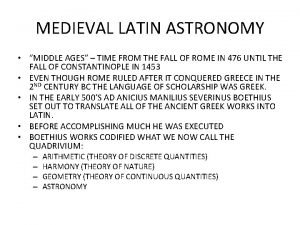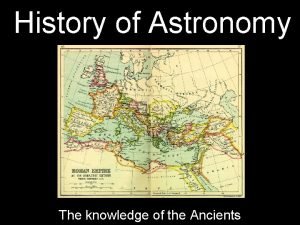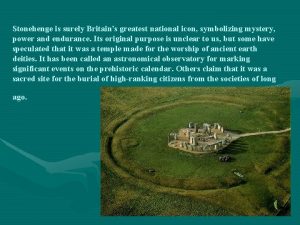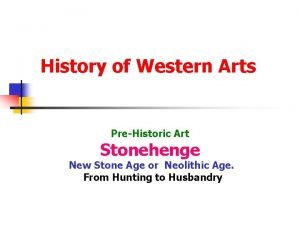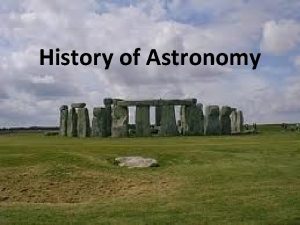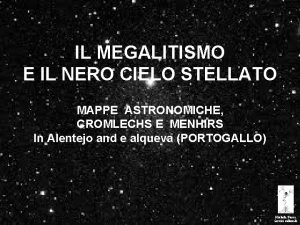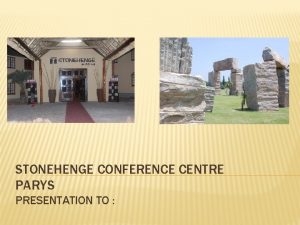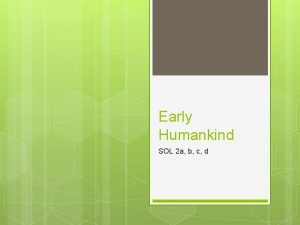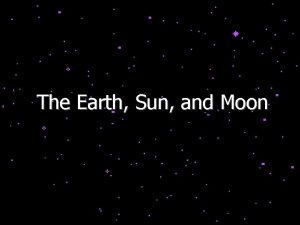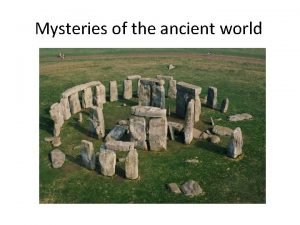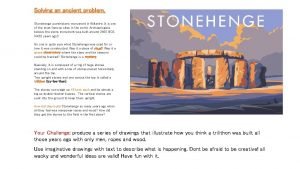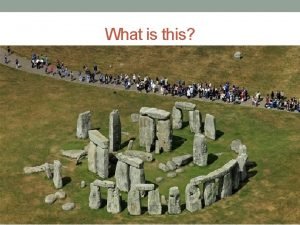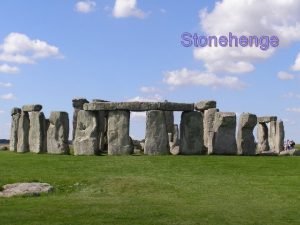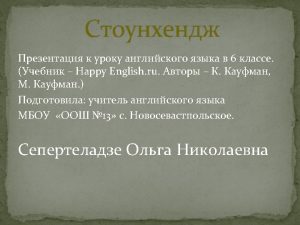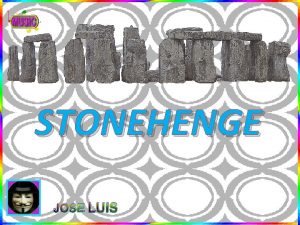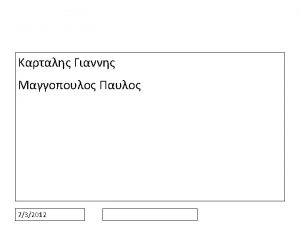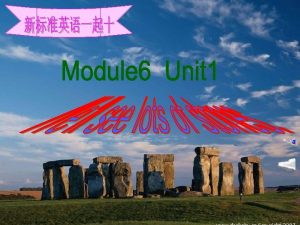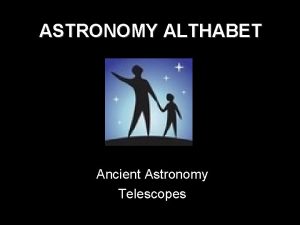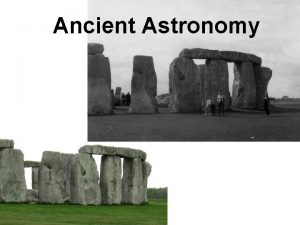Astronomy from ancient Times Ancient Astronomy Stonehenge on






















- Slides: 22

Astronomy from ancient Times

Ancient Astronomy Stonehenge on the summer solstice. As seen from the center of the stone circle, the Sun rises directly over the "heel stone" on the longest day of the year. The Big Horn Medicine Wheel in Wyoming, built by the Plains Indians. Its spokes and rock piles are aligned with the rising and setting of the Sun and other stars.

Astronomy in Early Americas • Maya Indians developed written language and number system. • Recorded motions of Sun, Moon, and planets -especially Venus. • Fragments of astronomical observations recorded in picture books made of tree bark show that Mayans had learned to predict solar and lunar eclipses and the path of Venus. • One Mayan calendar more accurate than those of Spanish.

Constellations • People drew pictures of constellations; created stories to account for the figures being in the sky. • Used stars and constellations for navigation.

Aristotle’s Universe: A Geocentric Model • Aristotle proposed that the earth was at the center of the universe with everything orbiting around it. (Geocentric) • Everything moved in perfect circles.

Planetary Motion • From Earth, planets appear to move different from stars. • Most of the time, planets move west to east (compared to stars) • Occasionally, they appear to change direction and temporarily go backwards. (Retrograde motion) (retrograde-move) retrograde-move

Heliocentric Model - Copernicus • In 1543, Copernicus proposed that: the Sun, not the Earth, is the center of the solar system. • Such a model is called a heliocentric system. • Ordering of planets known to Copernicus in this new system is illustrated in the figure. • Represents modern ordering of planets. • (copernican-move)

Galileo • Galileo used a telescope to observe 4 points of light that changed their positions with time around the planet Jupiter. • He concluded that these were objects in orbit around Jupiter.

Johannes Kepler: Laws of Planetary Motion

Kepler: Elliptical orbits The amount of "flattening" of the ellipse is the eccentricity. In the following figure the ellipses become more eccentric from left to right. A circle may be viewed as a special case of an ellipse with zero eccentricity, while as the ellipse becomes more flattened the eccentricity approaches one. (eccentricity-anim)

Kepler’s 1 st Law: The orbits of the planets are ellipses, with the Sun at one focus of the ellipse.

Kepler’s 2 nd Law • The line joining the planet to the Sun sweeps out equal areas in equal times as the planet travels around the ellipse. Orbit-anim


Newton had an interesting ‘thought experiment’: Is it possible to throw an object into orbit around the Earth?

If a ball is thrown, it usually falls back to earth. The harder you throw, the farther it goes. But it eventually falls to Earth.

you threw it fast enough, it would On. But all ifthese trajectories, the projectile is inkeep free falling until it got all the way back to where you started.

… that as it falls, the Earth curves away underneath On all these trajectories, the projectile is in free fall. it, and the projectile completes entire orbits without ever hitting the Earth.

Gravity and Orbits The Sun’s inward pull of gravity on the planet competes with the planet’s tendency to continue moving in a straight line.

Apparent Weightlessness in Orbit This astronaut on a space walk is also in free fall. The astronaut’s “sideways” velocity is sufficient to keep him or her in orbit around the Earth.

Let’s take a little time to answer the following question: • Why do astronauts in the Space Shuttle in Earth orbit feel weightless?

• Some common misconceptions which become apparent in answers to this question are: (a) there is no gravity in space, (b) there is no gravity outside the Earth’s atmosphere, or (c) at the Shuttle’s altitude, the force of gravity is very small.

In spacecraft (like the Shuttle) in Earth orbit, astronauts are in free fall, at the same rate as their spaceships. On allisthese That why they trajectories, experience the weightlessness: projectile is in free just fall. as a platform diver feels while diving down towards a pool, or a sky diver feels while in free fall.
 Learning astronomy by doing astronomy activity 1 answers
Learning astronomy by doing astronomy activity 1 answers Learning astronomy by doing astronomy activity 1 answers
Learning astronomy by doing astronomy activity 1 answers Learning astronomy by doing astronomy activity 7 answers
Learning astronomy by doing astronomy activity 7 answers Astronomy in medieval times
Astronomy in medieval times 15 times 15 times 20
15 times 15 times 20 Astronomy in ancient rome
Astronomy in ancient rome Vive le vent pronunciacion
Vive le vent pronunciacion Stonehenge tlocrt
Stonehenge tlocrt Stonehenge souvenirs
Stonehenge souvenirs Stonehenge is britain's greatest national icon
Stonehenge is britain's greatest national icon Stonehenge art history
Stonehenge art history The druids may have used stonehenge dgp
The druids may have used stonehenge dgp Stonehenge location
Stonehenge location Reading to stonehenge
Reading to stonehenge Stonehenge planetary orbits
Stonehenge planetary orbits Stonehenge mappa concettuale
Stonehenge mappa concettuale Stonehenge parys activities
Stonehenge parys activities Humankind stonehenge
Humankind stonehenge When was stonehenge built
When was stonehenge built Easter island and stonehenge
Easter island and stonehenge Stonehenge
Stonehenge Characteristics of stonehenge
Characteristics of stonehenge Stonehenge
Stonehenge



